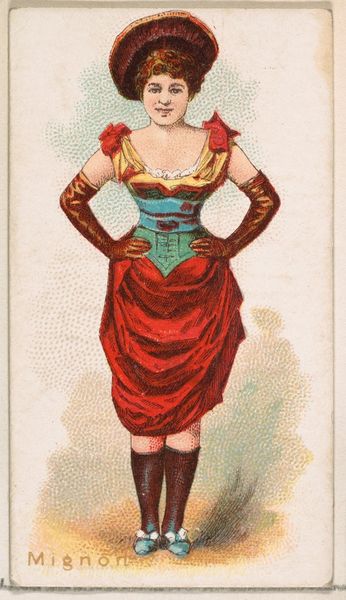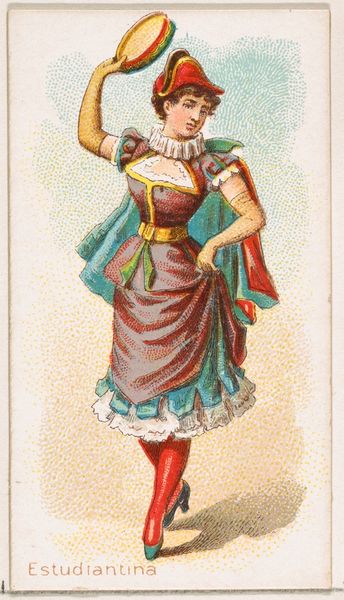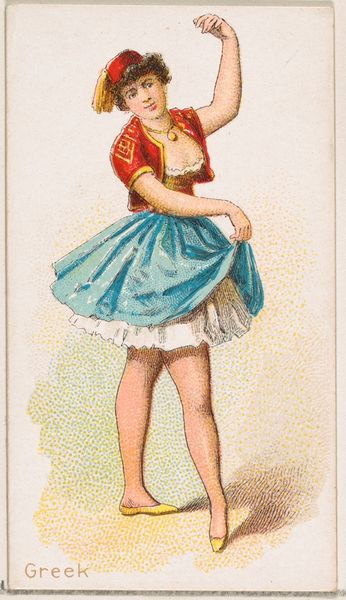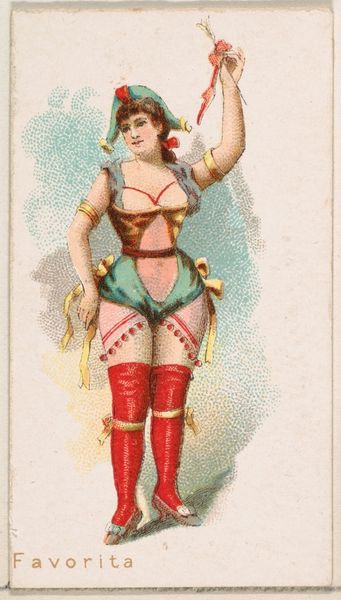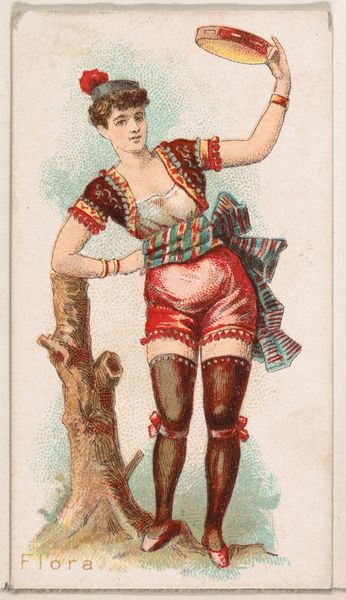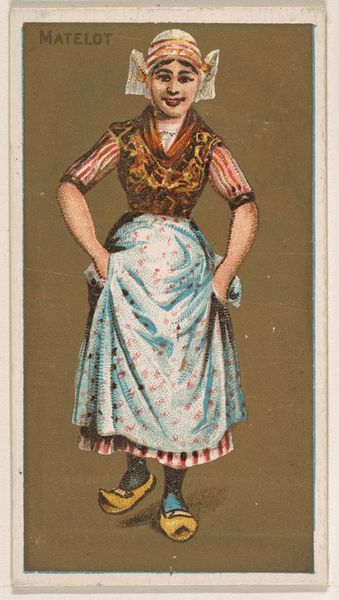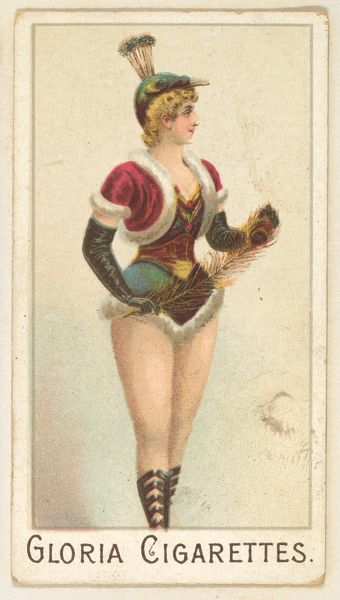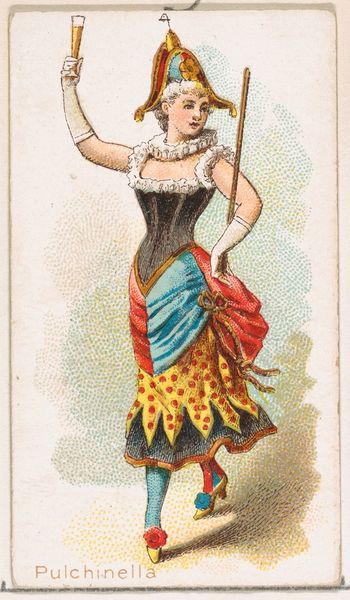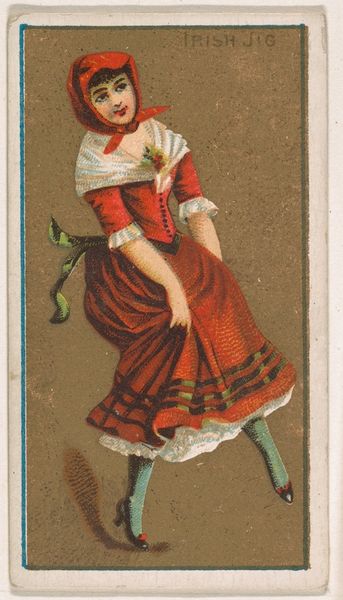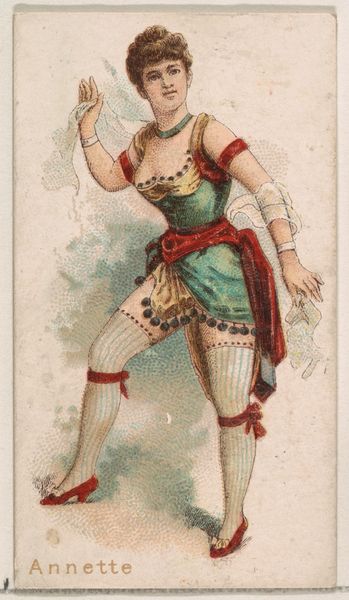
Etta, from the Ballet Queens series (N182) issued by Wm. S. Kimball & Co. 1889
0:00
0:00
drawing, coloured-pencil, print
#
portrait
#
drawing
#
coloured-pencil
# print
#
figuration
#
coloured pencil
Dimensions: Sheet: 2 3/4 × 1 1/2 in. (7 × 3.8 cm)
Copyright: Public Domain
Curator: Let's talk about "Etta, from the Ballet Queens series (N182) issued by Wm. S. Kimball & Co.," dating back to 1889. Editor: Oh, the pose is so staged. It's really a glimpse into the constructed femininity of the time, isn't it? And is it print? It's got that manufactured feel, perfect for mass consumption. Curator: Exactly. These were trading cards, included in cigarette packs. The figure of "Etta" served to promote consumption, contributing to the emerging commodity culture of the late 19th century. Editor: So we're talking about mass production here? Look at how the colour-pencil is applied. This wasn't about some unique artistic vision. This was labour. Someone sat and applied pigment, over and over to create a desirable, saleable object. Curator: Indeed. And her presentation — the exaggerated costume and pose – highlight the public spectacle of entertainment. The cultural significance lies in what this image tells us about the expectations surrounding female performers. Editor: I can't help but see the materials themselves as telling their own story. The cardstock speaks of industrial processes and accessibility, while the very precise colour applications signify a regulated form of craftsmanship in this piece. Curator: You make a solid point. And one might argue the appeal of the artwork rests not only on Etta herself but also on the material promise these collectible cards offered consumers—a hint of glamour for the everyday. Editor: Yes, it really shifts the focus away from the artistic merit, instead centering the labour, production, and how it's intended to be used by ordinary folk. These commercial objects normalize the image for mass audiences. It says so much about art being produced for consumer culture. Curator: Absolutely. It is in this sense a historical record of public life. Thanks for highlighting that perspective. Editor: My pleasure. It’s really about peeling back the surface to understand the social systems that gave rise to artworks like this.
Comments
No comments
Be the first to comment and join the conversation on the ultimate creative platform.

